After arriving in Tokyo my first port of call was the area where I would be staying; Shibuya (渋谷) in the southwest on the city on the Yamanote line. If you’ve ever watched a travel documentary about Tokyo before then you will have undoubtedly seen the iconic “scramble crossing” directly outside the station with its enormous video screens and neon advertisements.
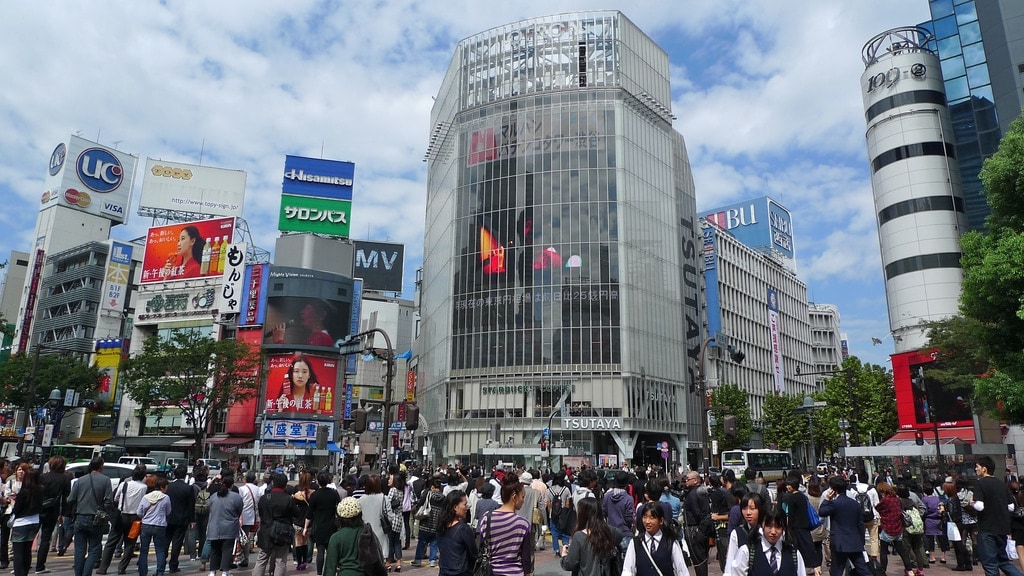
To get here you’ll want to leave the station via the Hachikō (ハチ公) exit which drops you directly at the mouth of the five-way crossing which is the gateway to the area where all the action is. Marvel as hundreds of people simultaneously cross the intersection every three minutes (check out the video at the end of the post).
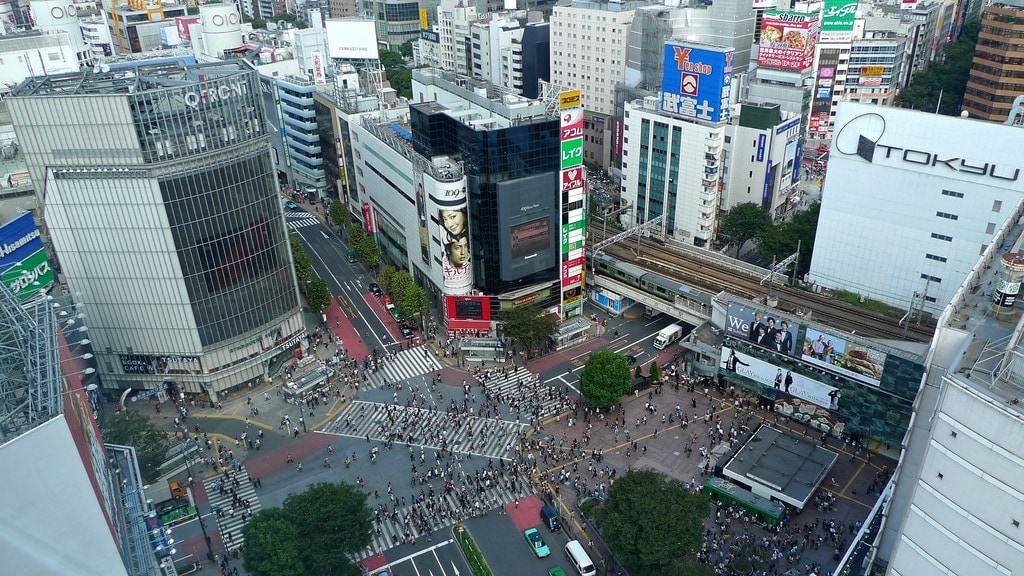
If you want to get an aerial view of the surroundings you could sneak into the Excel Hotel above the Mark City department store where the upper floor lobbies provide a good view. In the basement there’s an amazing gourmet food hall – just follow the signs for ‘Tokyu Food Show‘.
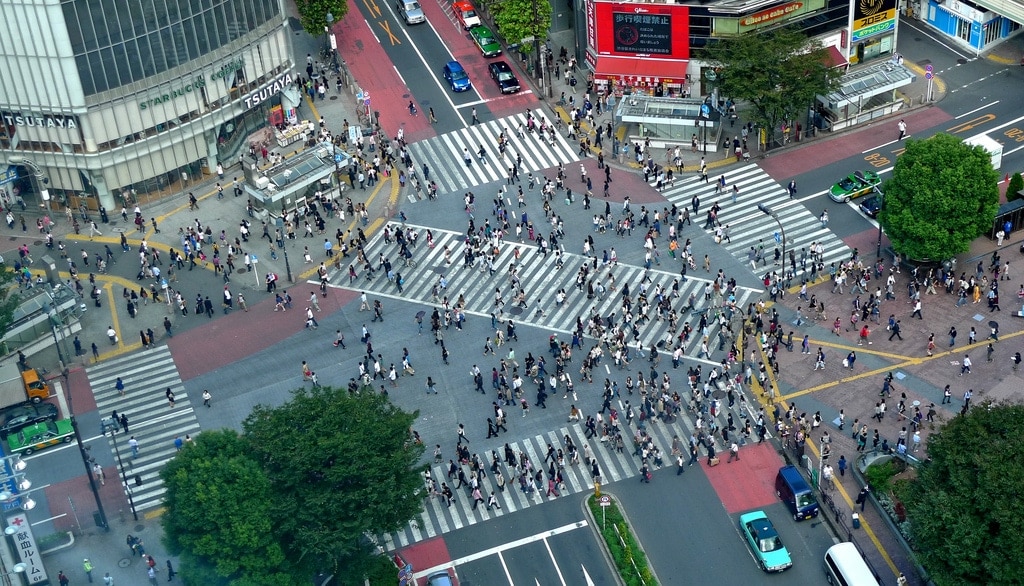
From here you can see just how crazy the crossing is – in any other country it would probably induce chaos but in Japan where everyone obeys the rules it works rather well. I loved watching the moment when all sides intersect in the middle and somehow still make it across.
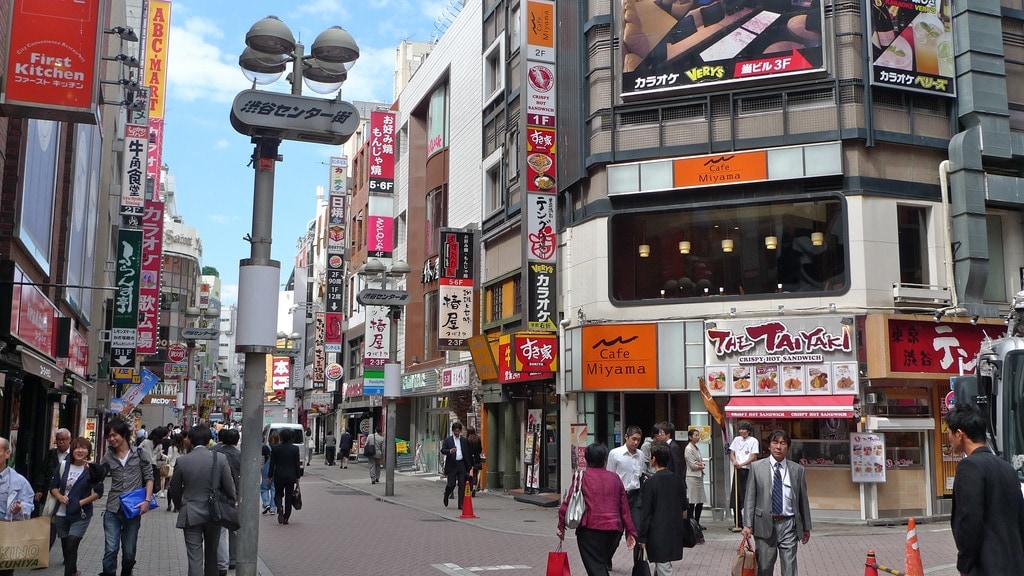
To the left of the giant video screen is the entrance to Center Gai (センター街) which is famous as the birthplace of many of Japan’s youth fashion trends – a great place to wander and people watch. If you’re feeling peckish there are plenty of restaurants – beware that at many places you should order what you want using a ticket machine outside. Simply pick what you want from the picture menu, hit the corresponding number on the machine and enter the correct money. Go inside and present your ticket to receive your meal.
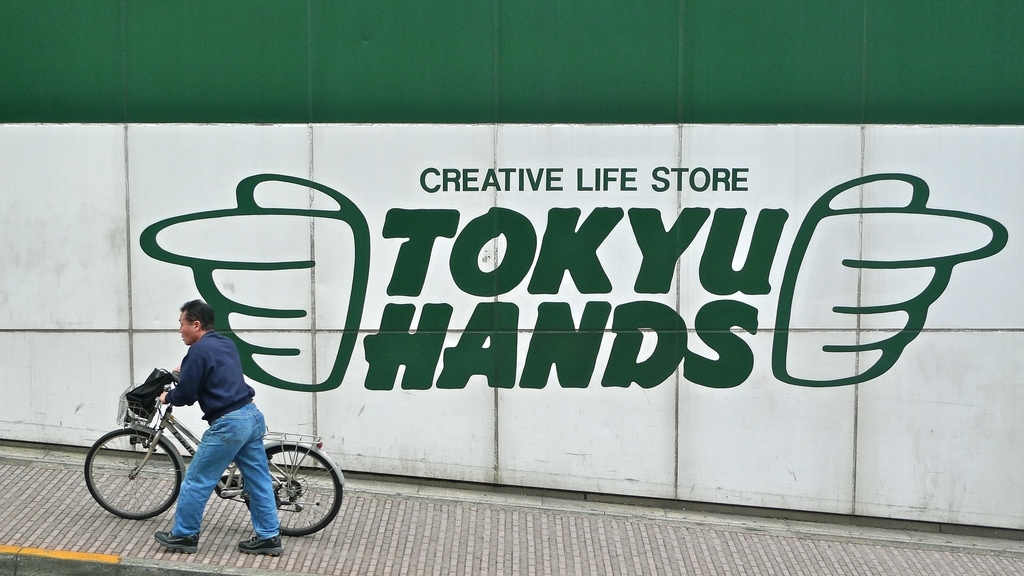
On of my favourite stores in the area was ‘Tokyu Hands‘ – a DIY store specialising in arts & crafts materials of epic proportions. In here you could just about buy anything your heart or hobby desires spread across 10 meticulously streamlined floors in a way that only the Japanese could pull off. Must be seen to be believed.
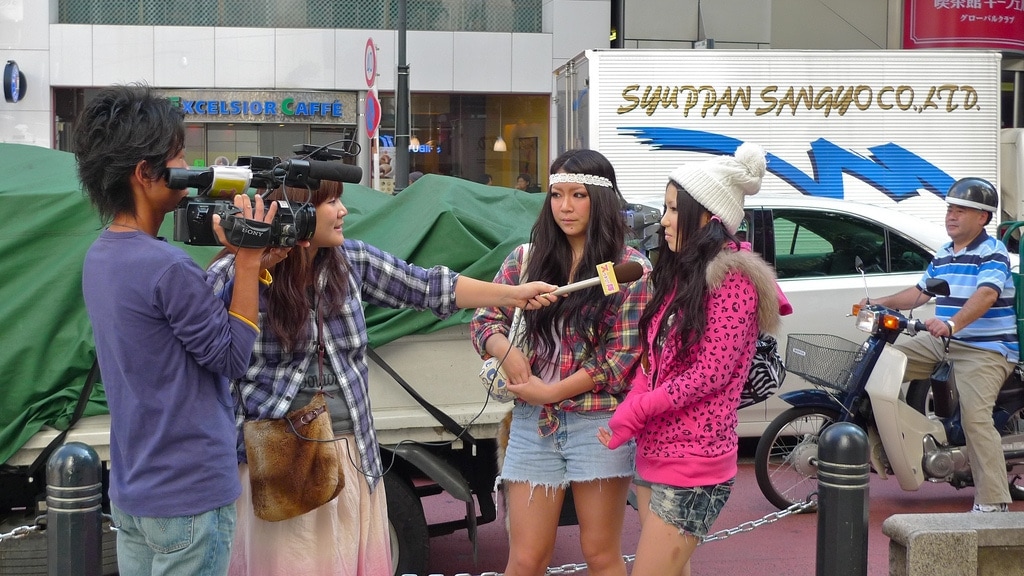
On the streets you’re bound to spot many dolled-up young women in unique attire milling around hoping to get spotted by a talent agency or just get their picture in one of the many fashion publications. If you’re feeling brave head into Shibuya 109 which plays host to a world of small clothing shops which they frequent. Some of the styles are really quite bizarre.
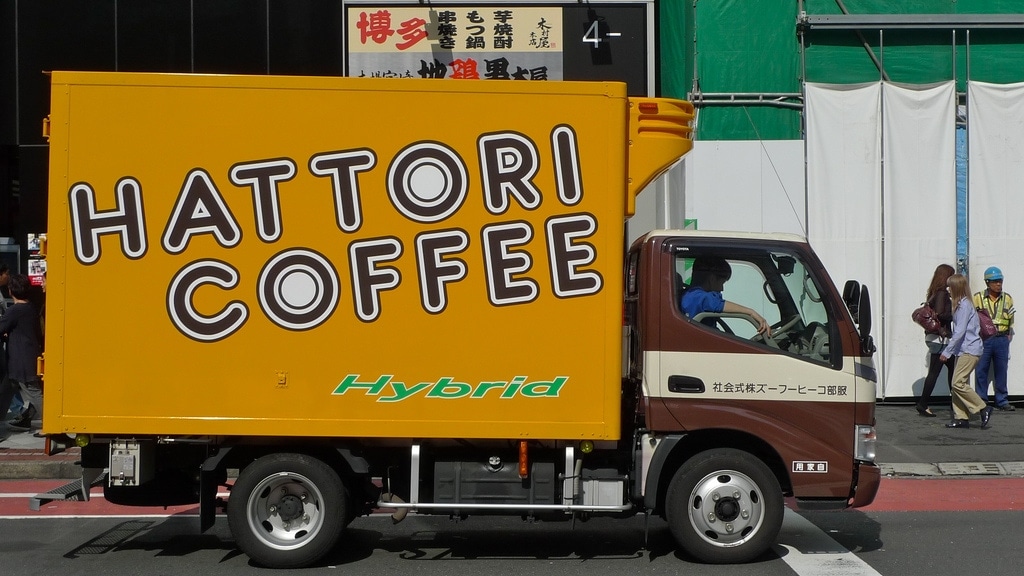
One thing which becomes very clear from the moment you step foot in Japan is that the whole country is obsessed by the notion of everything needing to be cute (or kawaii as they say). This covers everything from mascot characters to mannerisms and the design of everyday items. Cuteness is one of Japan’s biggest exports both in material products and popular culture.
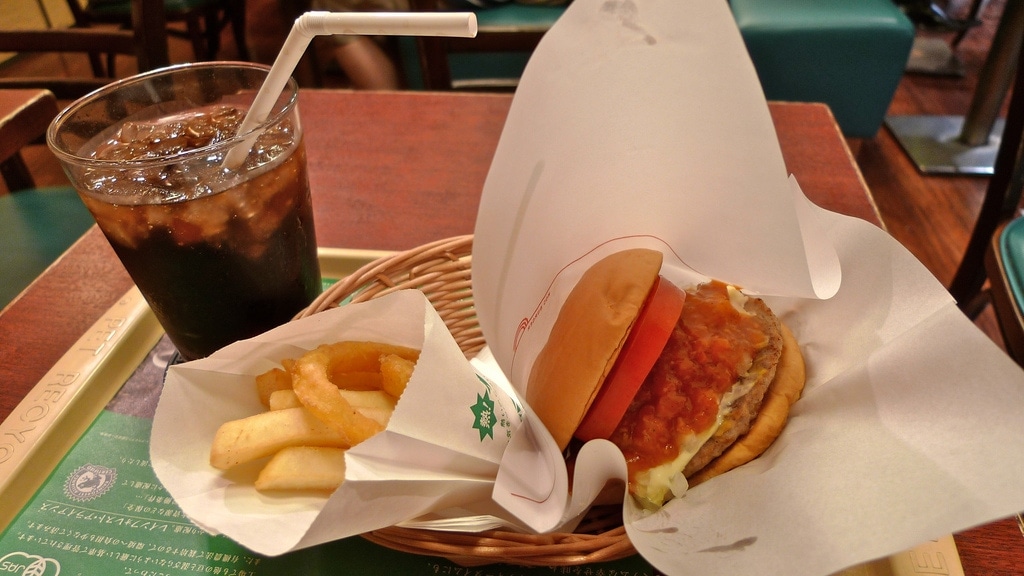
While I’m not usually a fan of fast-food I had to try out Japan’s equivalent of McDonald’s called MOS Burger – as these things go it turned out to be actually very tasty. Everything tasted fresh and the portion sizes were decent (tiny by American standards but look where that’s got them).
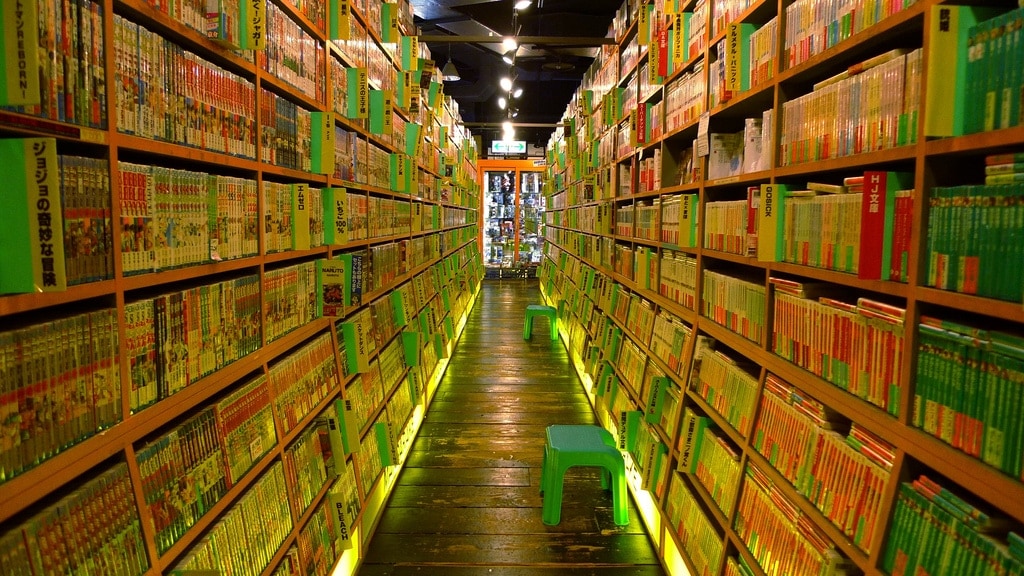
My next stop took me deep underground to visit Mandarake, a library-sized anime and manga store selling copious volumes along endless shelves. It’s fascinating to browse even if you’re not interested in that sort of thing.
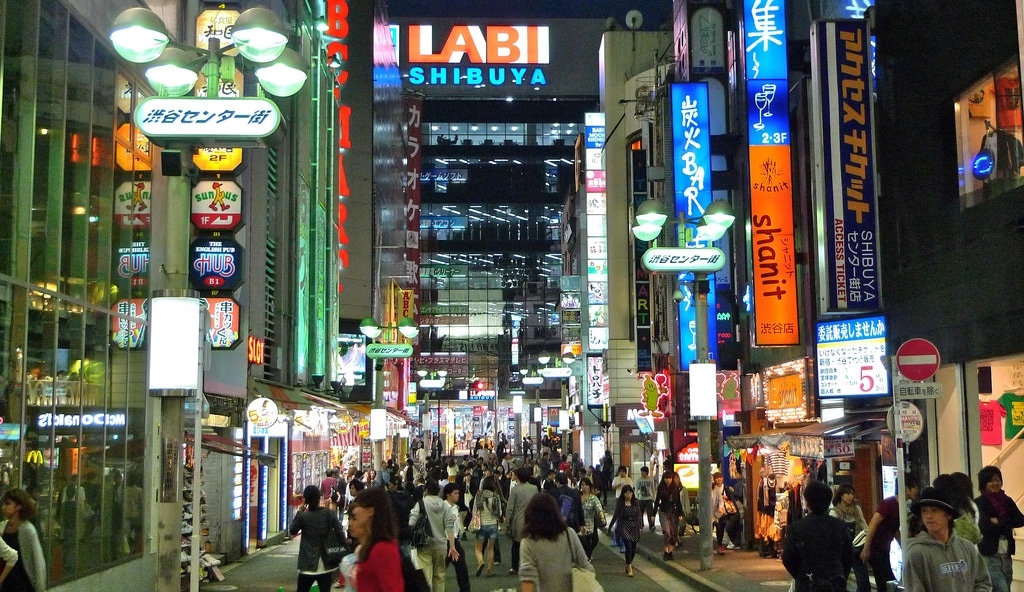
As people finished work and night fell the area came to life with neon lighting and restaurants doing brisk business. Most of the crowds looked fairly young which characterises the whole area.
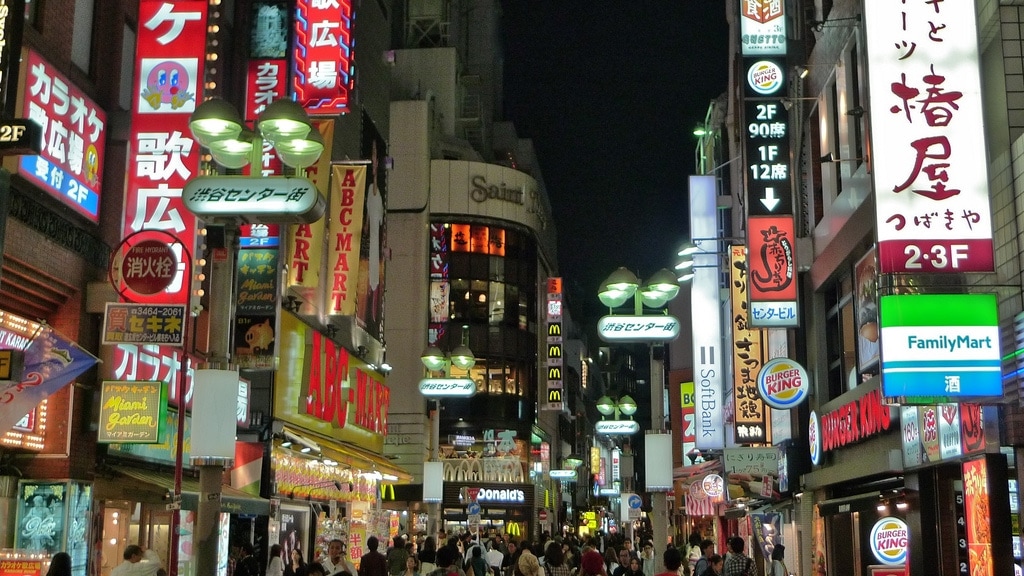
I took a couple of loops around the area while looking for somewhere to eat and taking some snaps. This is not somewhere for the claustrophobic or easily overwhelmed!

Chinese readers will be able to understand many of the signs that use traditional Kanji characters which originally came from the mainland around 57 AD.
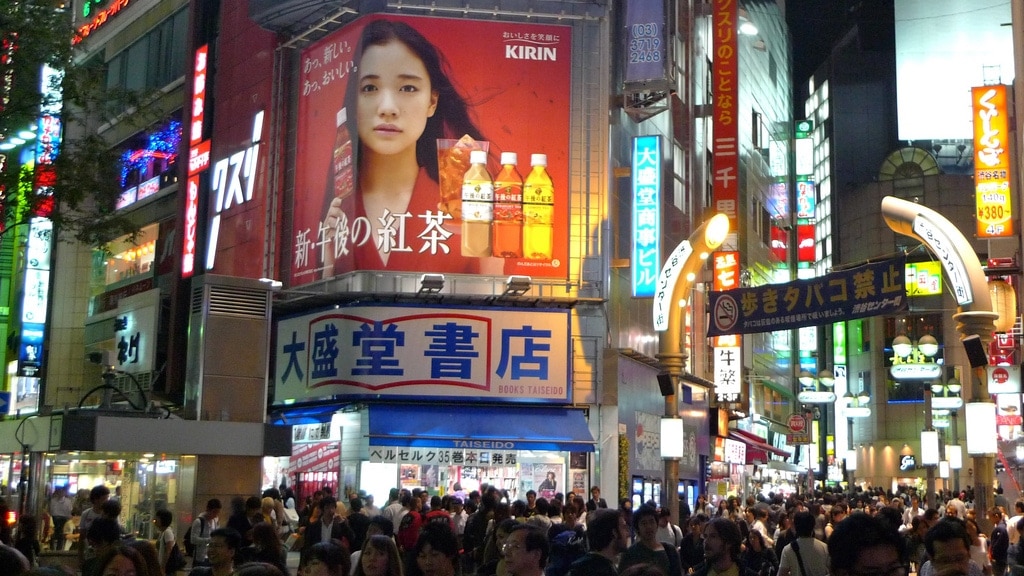
Reading and writing Japanese is complicated since there are three different character systems in use: Kanji (漢字) are used to write parts of the language such as nouns, adjective stems, and verb stems, while Hiragana (ひらがな) are used to write inflected verb and adjective endings, particles, and native Japanese words. Katakana (カタカナ) are used for representing onomatopoeia, non-Japanese loanwords, and for emphasis on certain words. Latin characters are also sometimes thrown into the mix to further confuse things.
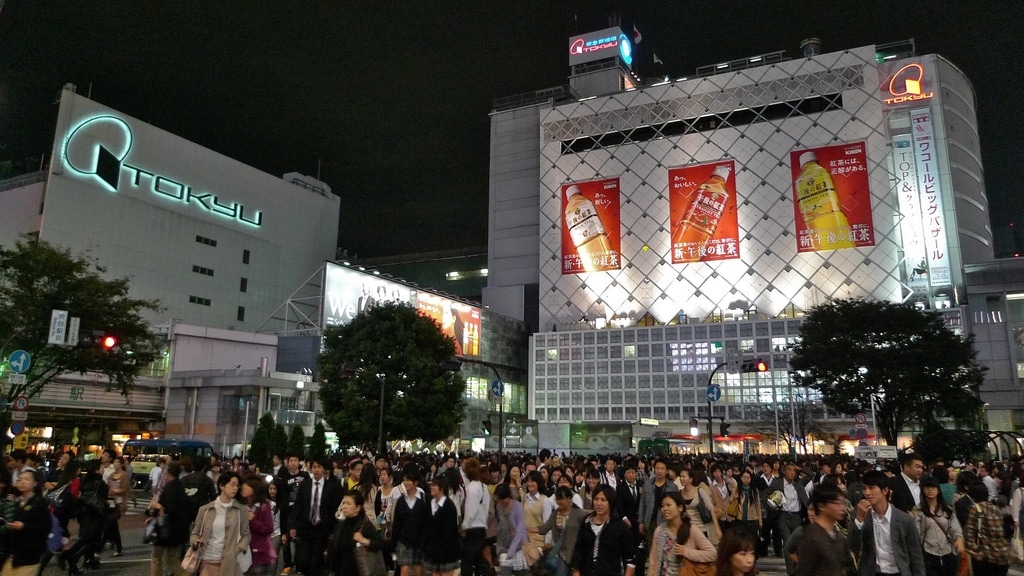
The scramble crossing is even more impressive at night and the best place to view it from has to be the second floor Starbucks which is one of the busiest in the world and the location where a scene from Lost in Translation with Scarlett Johansson was filmed.
While I was there I shot the short film above – see if you can spot the continuity errors!

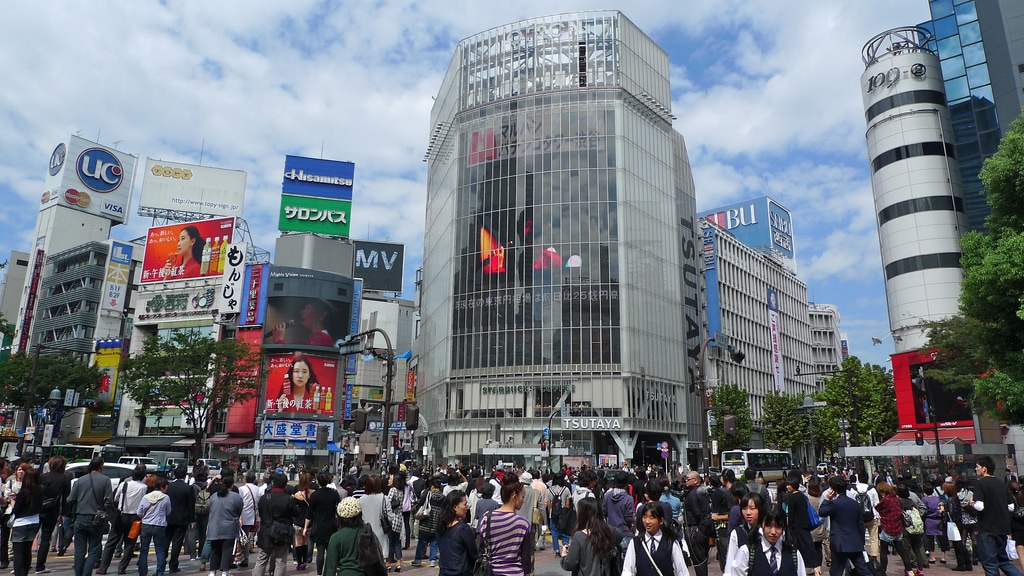
Reply